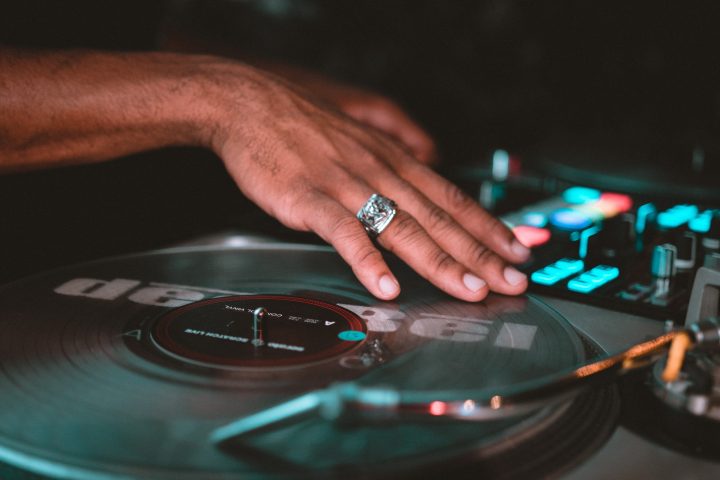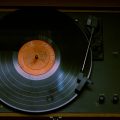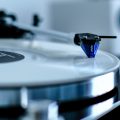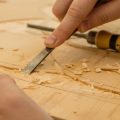Looking to expand your knowledge and learn about wow and flutter? What exactly does wow and flutter mean in terms of music and turntablism?
Well, let’s find out as we take a deep dive into wow and flutter and how they can significantly impact the overall sound of a record player.

Wow and Flutter As One
Before we even begin to understand the various intricacies of sound recording involved in the comprehension of wow and flutter as separate entities, it is first necessary to know how they relate to one another.
While they were once more or less separate terms, they have since become one, so a wow and flutter measurements are usually taken together. Thanks to universal standards of measurement in this regard, there is a more standardized and comprehendible metric by which to record these phenomenons.
As with many parts of a turntable and the world surrounding it, this is a rather subjective matter. In fact, there are many audiophiles who believe that flutter is more important in determining the quality of a turntable. Both, however, are still crucial to determining the relative quality of a turntable, regardless of whether, in some instances, one is more important than the other.
Thus, it is vital that both are taken into account when attempting any sort of reliable and stable metric by which to assess the veritable quality of a turntable in relation to another.
What are Wow and Flutter?
If you have ever heard a cassette tape become distorted, then you have likely been privy to the phenomenon of wow and flutter. This is something that all turntables are themselves privy to, though to varying degrees, of course. Wow or flutter ranges of up to .25% are incredibly difficult to pick up by the human ear, though much more, and the effect starts to become audible.
In more extreme instances, the playback speed and, thus, the rotation speed of the turntable platter is so drastically affected that it becomes displeasing to the ear. Again, as above, this is all relative, and this kind of thing is actually pleasing to some ears, though perhaps not generally when you are trying to just listen to a record without any phenomenological interruptions.
For these reasons, turntables with high wow and flutter are widely shunned in the audiophile community, with high levels of distortion avoided by more seasoned record collectors. Today’s turntables come out of the factory with a wow and flutter range between .10% and .20%, and any additional wow and flutter is curbed by the use of devices like record clamps by those whose ears are particularly attuned to the phenomenon.
For a more detailed account of what wow and flutter is and what it looks like, check out this external resource.
What to Look for
Thankfully, most turntables these days will be gifted with a wow and flutter that is within the .25% range of human hearing, wherein there is still a recurrent phenomenon, but it is largely inaudible. Sadly, by the very nature of this enterprise, this is an unavoidable part of the record-collecting experience.
Just take a second to consider what a record player is doing when it is playing a record. Through its internal mechanisms, it is propelling a turntable platter round and round so that the needle on the surface can be guided through the grooves and track the vibrational data out through the stylus and the preamp and the amp and the speakers and into the world.
Whether it is a belt drive turntable or a direct drive turntable, the chances are that there are going to be some imperfections in the system. Why else, after all, would society have moved on to other forms like, say, the compact disc?
There are so many opportunities for imperfection and intrigue to rear their heads. The record label might even, for example, bear an off-center hole, meaning that the record will spin in an unruly way to and fro. There really is no escaping it, so you may as well just grin and bear it.
Turntable Performance
Hopefully, you have been lucky enough to purchase a turntable that already has a relatively low reading for its wow and flutter levels. Good for you! If that is important to you, then you will be sorted for a while.
However, a turntable does not perform in this way forever, so it would be wise for you to stay vigilant and check up on the turntable’s health and performance every so often. Wow and flutter, just like other such phenomena and parts on a turntable, can degrade over time.
This is especially the case if the record player either has not been cared for well enough in its previous life or if you are not giving it the proper care it deserves yourself. In such instances, the amazing specifications of the beast will not live up to its actual performance.
For this reason, many audiophiles will tell you that a brand-new turntable with a .15% wow and flutter can and often will sound better than an older turntable with a wow and flutter at .05%. Age matters – in the human world and the world of technology and things. In this way, a newer turntable is likely to sound better than an older turntable unless of course, the latter has been cared for extremely well, in which case nothing can quite beat it.
What Impacts Wow and Flutter?
How do we even assess the effects of this thing called flutter? How can we go about finding out what causes wow?
Well, we know for sure that both metrics are determined by the mechanics within a turntable as well as the electrical power that the turntable is receiving and is able to receive.
This is one of the major reasons why common knowledge suggests that older turntables are more likely to experience worsened wow and flutter. Their capacitor values drift over time in much the same way that the mechanical parts can simply wear down, even if they are tended to and appreciated with the utmost care.
In a similar way, power spikes can degrade a record player’s wow and flutter. These are drastic shifts in the constant current of electricity that can have an effect on the state of the electrical parts within a turntable (as well as countless other appliances) over time.
Sadly, the factors that degrade wow and flutter are difficult to pin down because they are so difficult to measure without a wealth of additional gadgetry. When all a record collector seems to want is a simple solution, there seems to be a gaping lack…
How to Protect Your Turntable
If you are looking to take your listening experience to the next level, one of the best things you can do is to start protecting your turntable from all the nasty things outlined above that can degrade your components over time.
One of the principal things you will want to invest in is a surge protector. This is a form of an extension cable that can protect your appliances from unforeseen damage via power surges and the like.
Why not branch out to your local record store, too, and have them kit out your turntable as it ages and give it the love and attention it deserves? Essentially, all you need to do is invest in a turntable with a decent wow and flutter rating and protect it from power surges and other damages.
Final Tones
So, there you have it! Hopefully, you are now feeling ready and able to tackle that wow and flutter once and for all.
FAQs Wow and Flutter
What does wow and flutter mean in music?
Wow and flutter is a pair of terms that, though once, separated, have come to be branched together to mean more or less the same thing. In measuring the wow and flutter of a turntable, you are essentially measuring the likelihood and recurrence of any imperfections in the rotational speed and accuracy of the turntable platter. Thus, the lower the wow and flutter reading of a turntable, the less audio distortion you are going to hear when listening to a piece of music via this medium.
What is acceptable wow and flutter on a turntable?
Technically speaking, turntables with a wow and flutter between 10% and 20% are usually pretty reliable and able to deliver the goods. In fact, most humans will scarcely be able to hear wow and flutter before the 25% range, unless of course, they are supreme audiophiles with little else to do than fawn over sound in the void left by love. Wow and flutter is an inescapable phenomenon of the record-collecting experience, so any turntable with a wow and flutter or 20% or less is a keeper.
What causes wow and flutter?
Wow and flutter is an inherent part of the record-collecting experience that cannot be totally avoided. Thus, we have to assume that wow and flutter come about as a result of something that makes a record player distinctly itself. The thing that sets a record player apart is the fact that it plays music by spinning it and letting a needle drag itself through its trenches. Therefore, we have to assume that this fact is at least one of the reasons for the occurrence of wow and flutter when listening to records on any record player.
Can you hear wow and flutter?
Wow and flutter as a set of phenomena is inherently audible, though the extent to which it can be heard by the naked human ear will depend on how strong the wow and flutter reading is. Wow and flutter readings below 25% or so are incredibly difficult to discern, hence why a good place to aim is between 10% and 20%, especially seeing as wow and flutter is entirely unavoidable.






